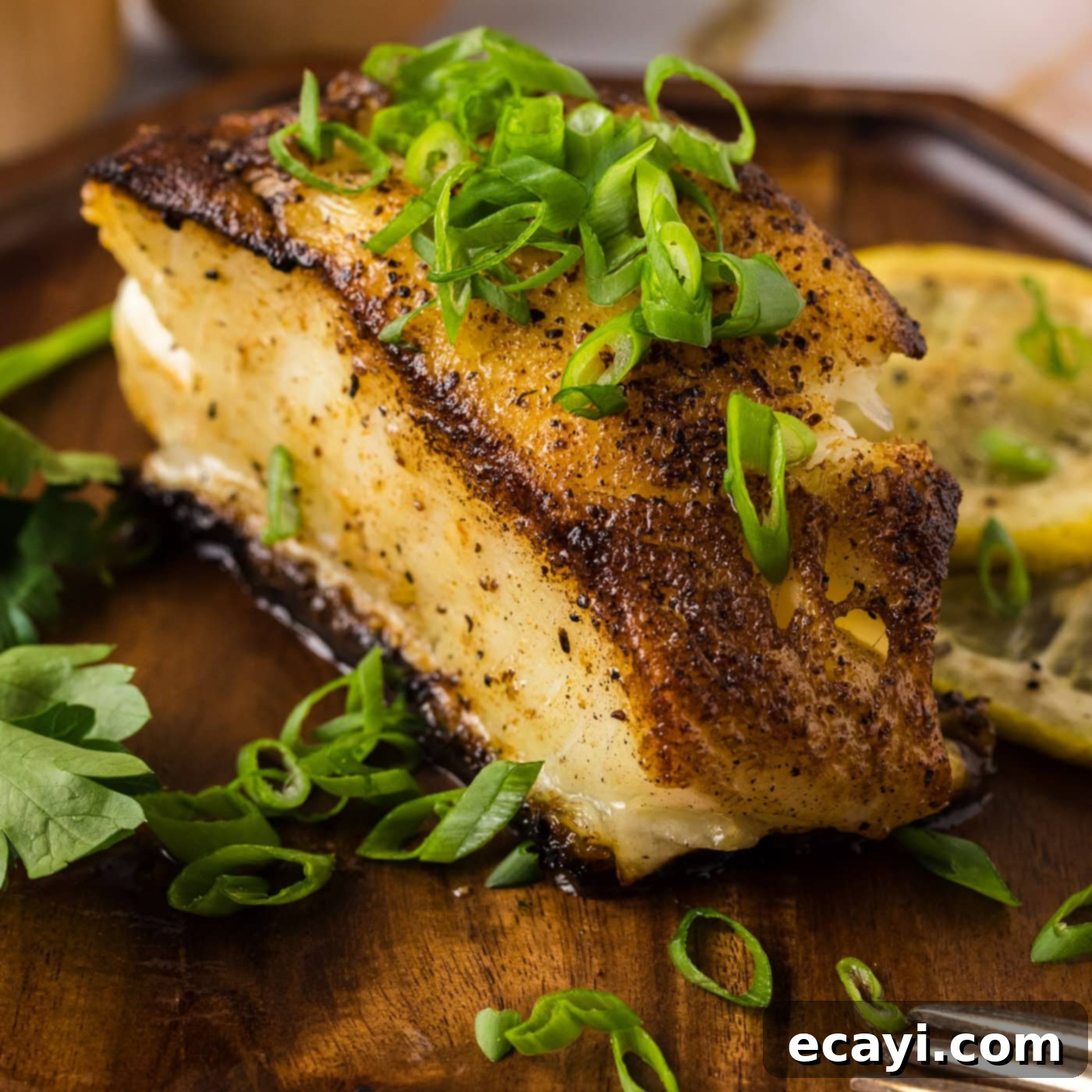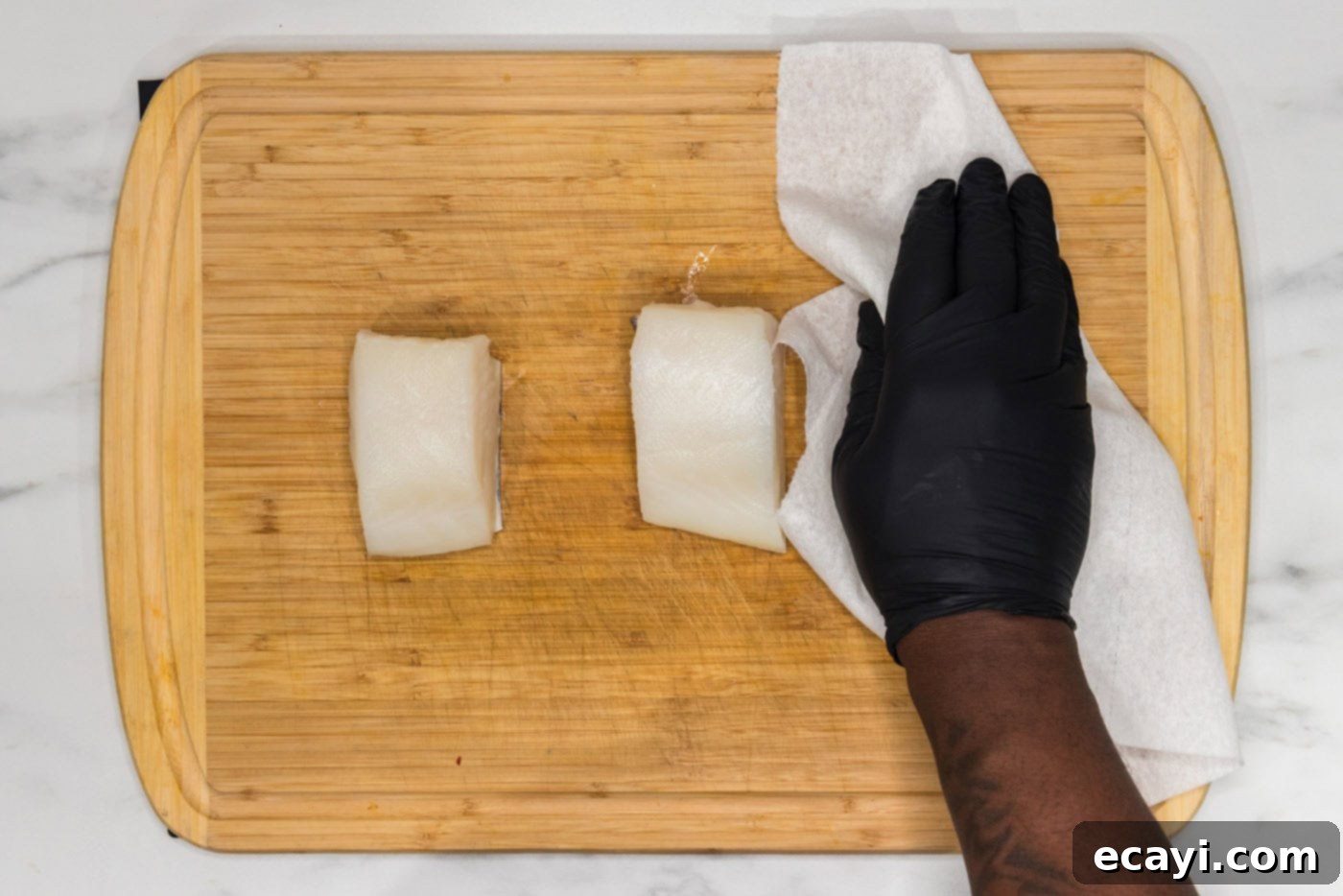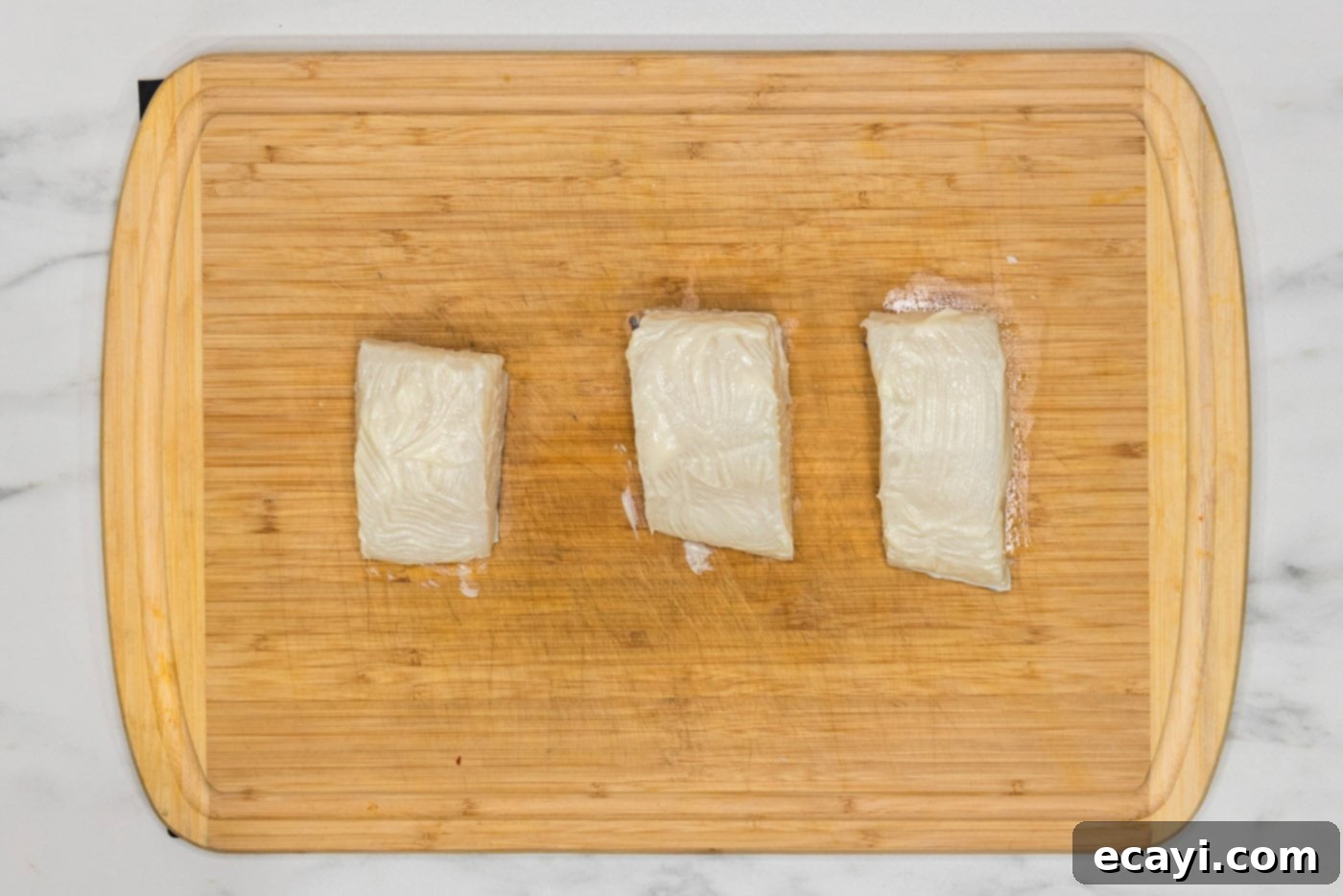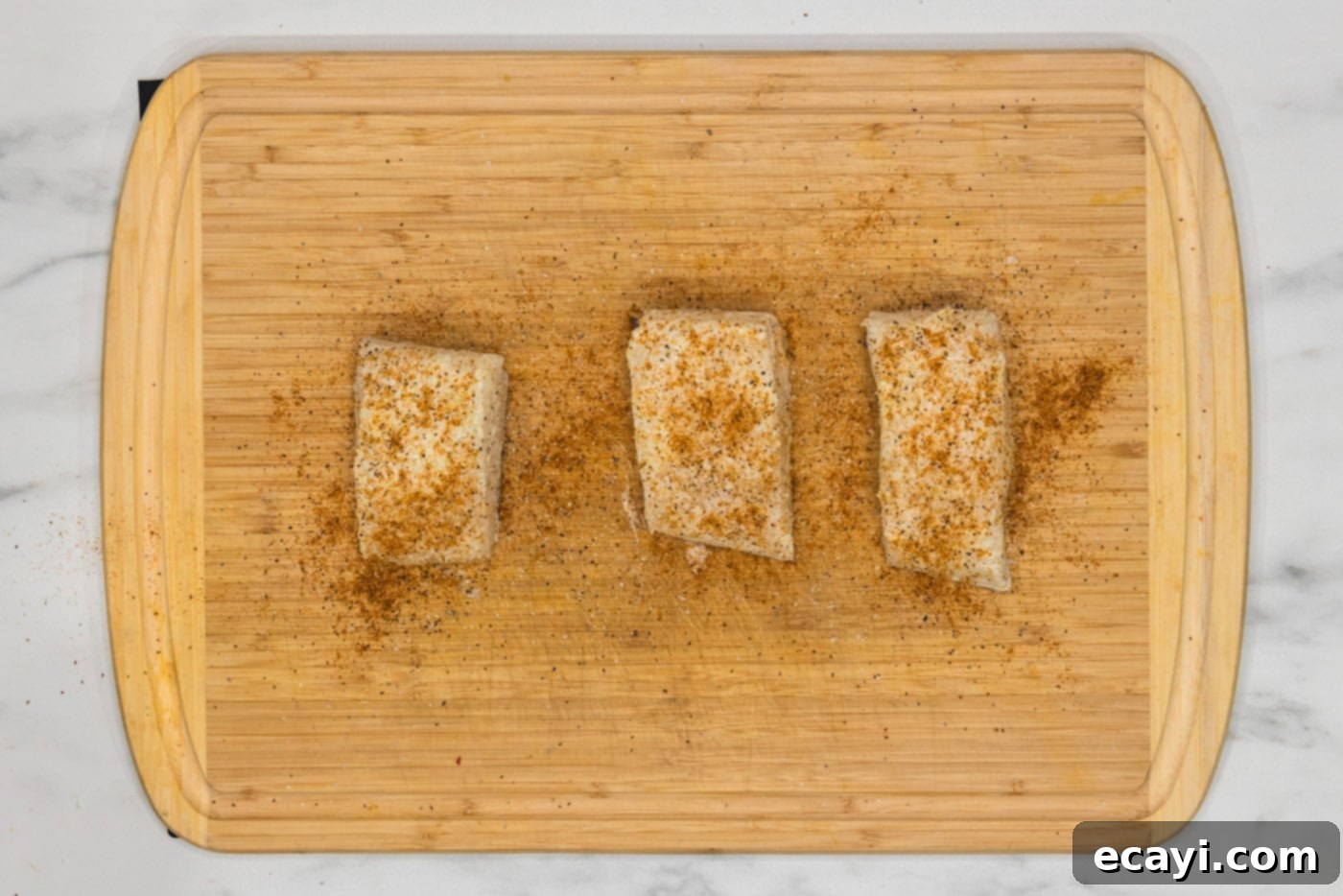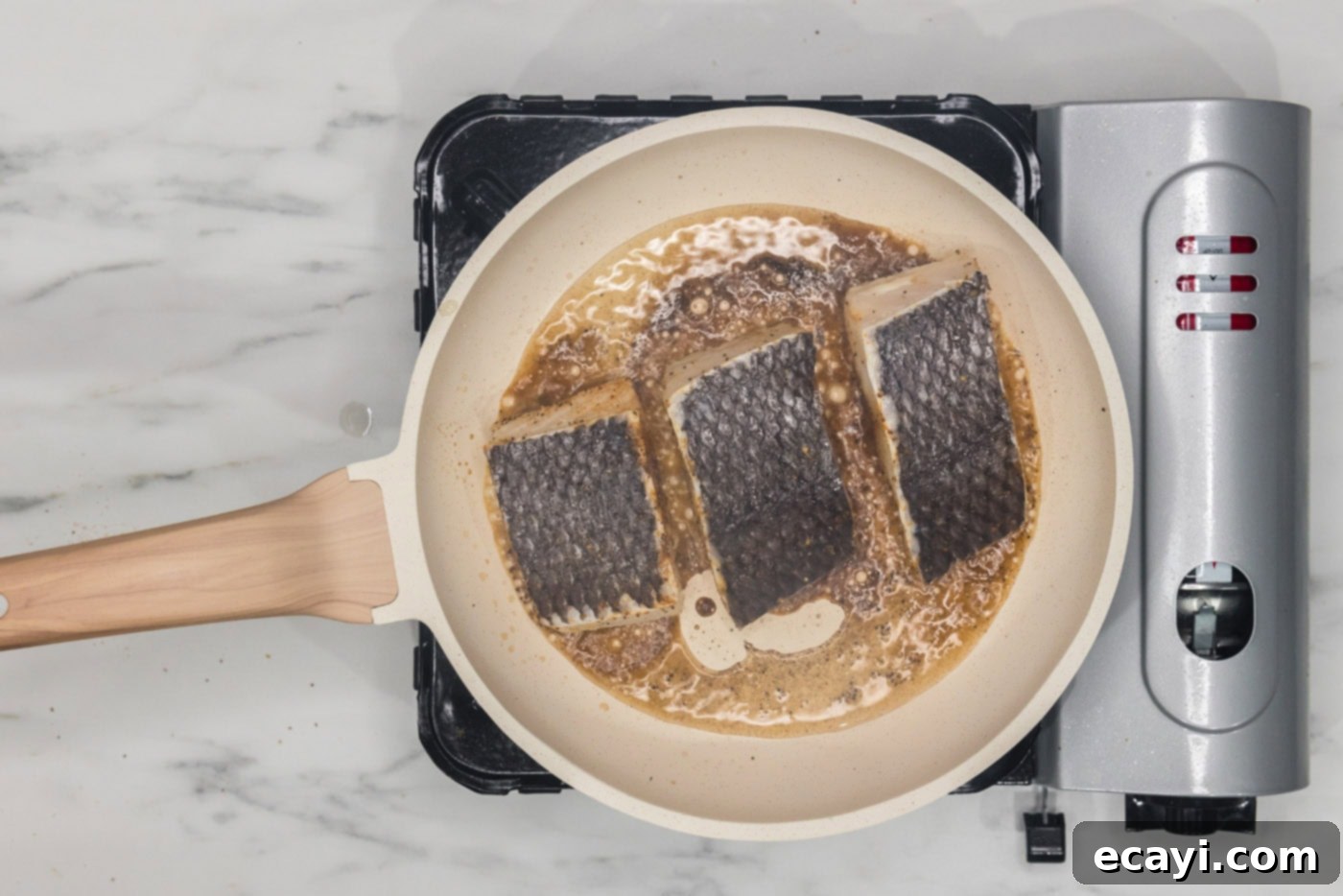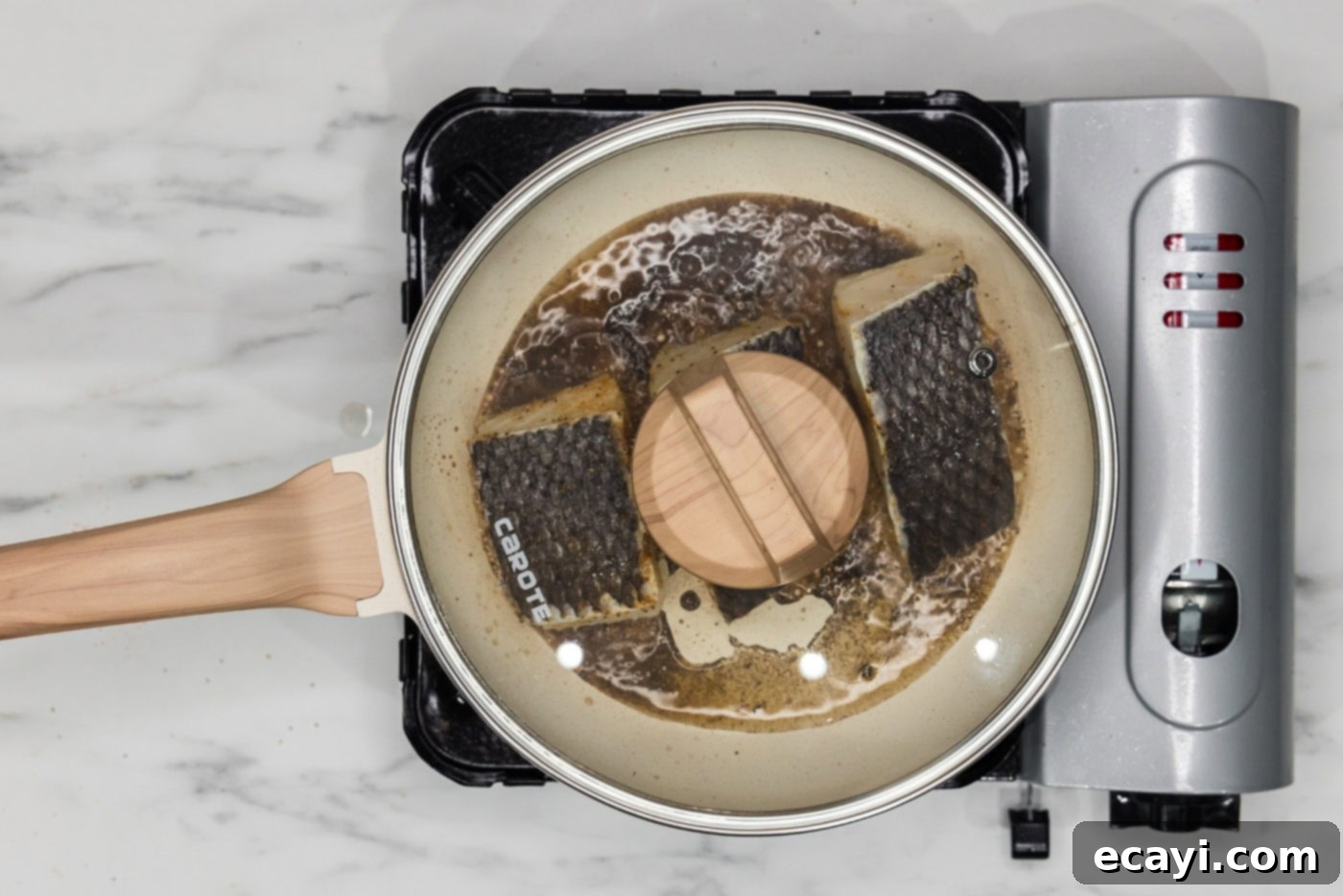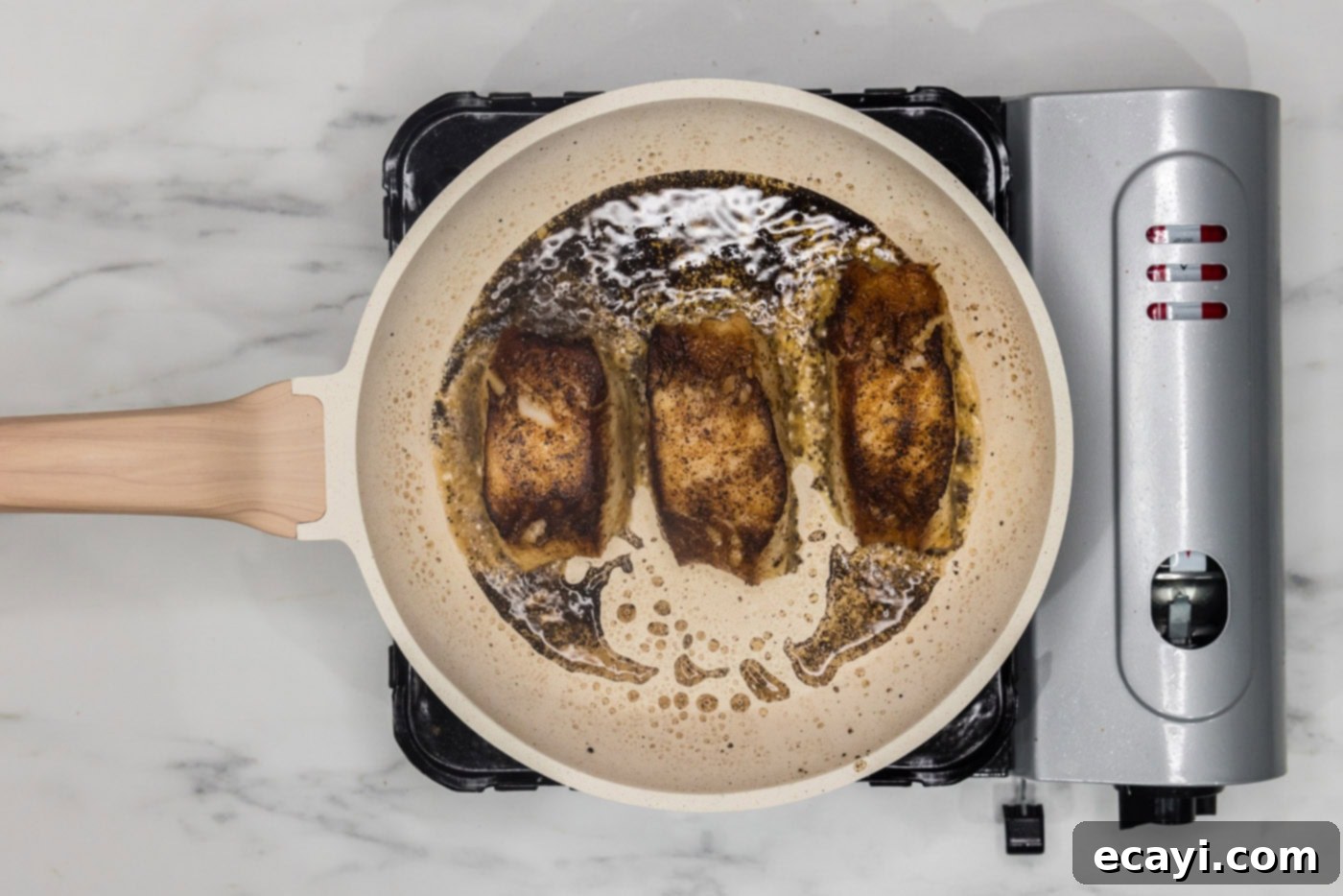The Ultimate Pan-Seared Chilean Sea Bass Recipe: Flaky, Buttery, and Ready in Under 25 Minutes
Prepare to elevate your weeknight dinners with this foolproof pan-seared Chilean sea bass recipe. In just under 25 minutes, you can create a restaurant-quality meal featuring succulent, buttery, and incredibly tender fish enveloped in a perfect golden crust. This isn’t just a recipe; it’s an experience that will impress even the most discerning palates with minimal effort.
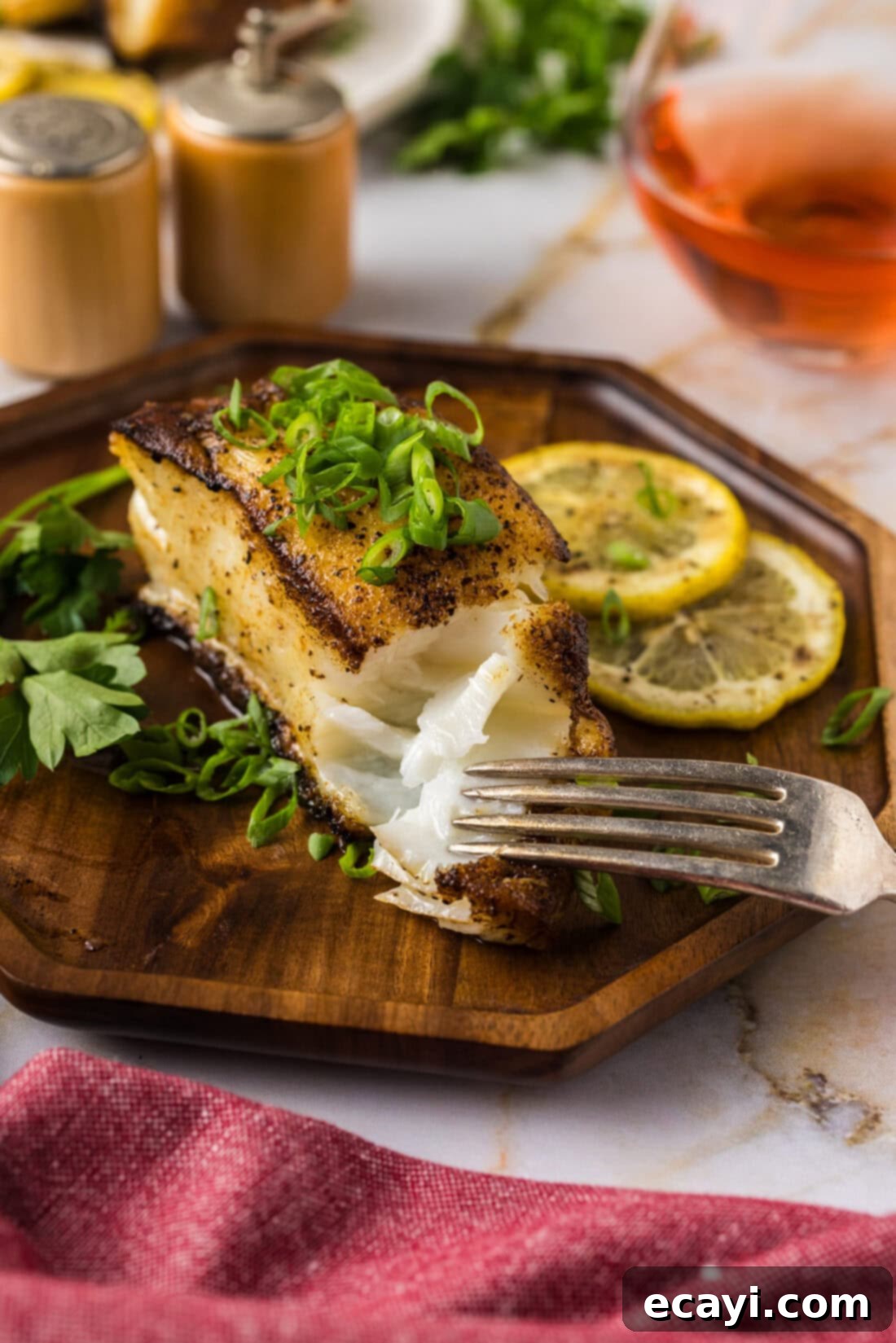
Why This Pan-Seared Chilean Sea Bass Recipe is a Must-Try
If you’ve never tried pan-seared Chilean sea bass, also known as Patagonian toothfish, you are in for a truly delightful culinary revelation. This particular fish boasts a unique firm yet incredibly flaky flesh, distinguished by its high fat content that lends itself to a buttery, melt-in-your-mouth texture. When pan-seared correctly, it develops a magnificent golden-brown crust that locks in all the delicate flavors and juices, creating a stark contrast with its tender interior.
Unlike some other fish varieties, Chilean sea bass has a remarkably mild and clean flavor profile, completely devoid of any strong “fishy” taste. Its thick fillets hold up beautifully to searing, ensuring a substantial and satisfying meal. This recipe specifically highlights the natural richness of the fish, enhancing it with a simple yet effective seasoning blend. For those who enjoy an extra layer of luxury, consider finishing your fillets with a vibrant lemon-butter Beurre Blanc sauce, similar to the one we feature in our baked Chilean sea bass recipe. The simplicity and speed of this pan-searing method make it ideal for a quick weeknight dinner, yet elegant enough for entertaining guests. The key lies in creating that perfect crispy exterior while maintaining a moist, tender center – a feat easily achieved with our straightforward steps.
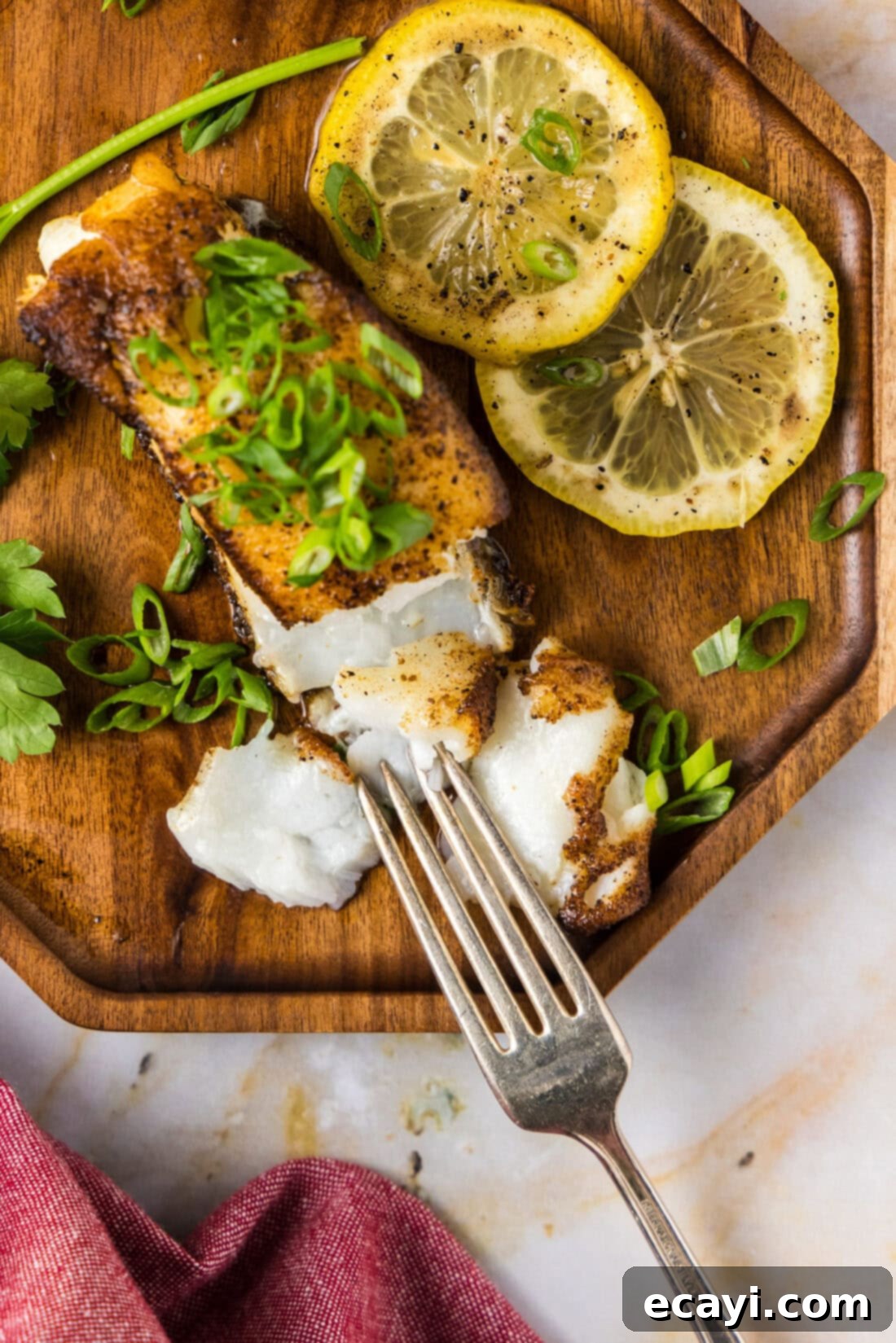
Essential Ingredients for Perfect Pan-Seared Sea Bass
Crafting this exquisite dish requires only a handful of key ingredients, focusing on quality to let the natural flavors shine. You’ll find a complete list with precise measurements in the printable recipe card at the bottom of this post, but let’s delve into what makes each component crucial for success.
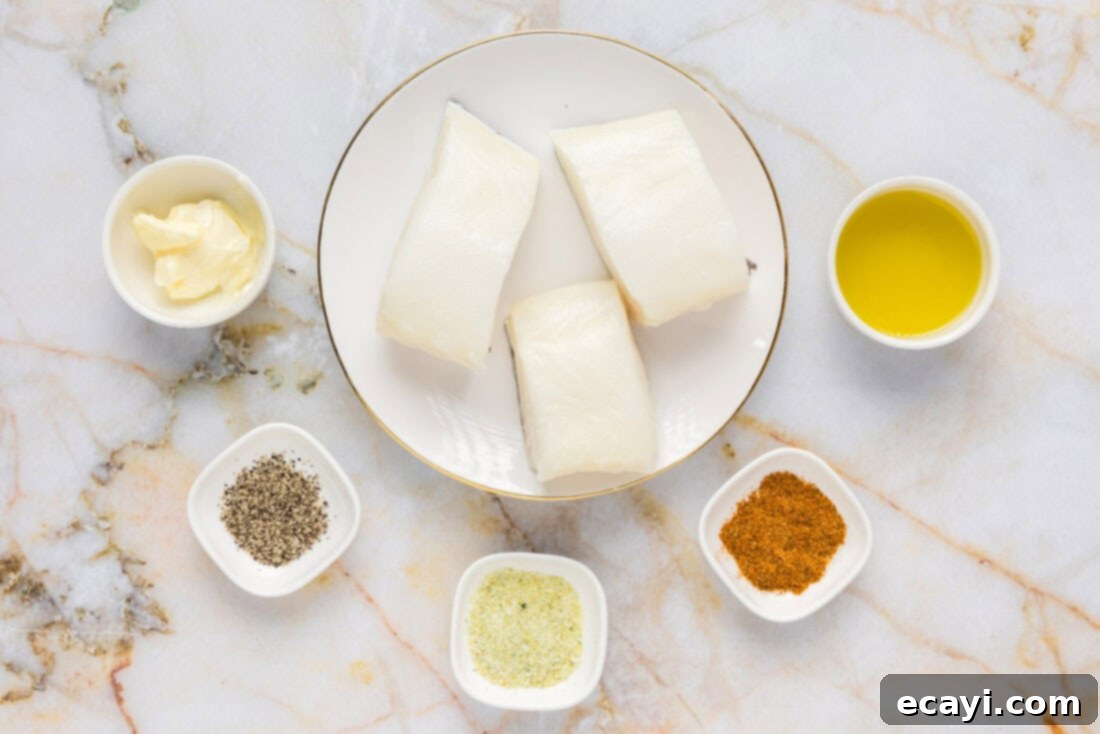
Ingredient Spotlight & Expert Substitutions
Understanding your ingredients is the first step to mastering any recipe. Here’s a closer look at what you’ll need and how to make smart choices.
FISH – As mentioned, Chilean sea bass is also widely known as Patagonian toothfish. When purchasing, look for fillets that are firm, moist, and have a fresh, mild scent. If you’re using previously frozen fish, proper thawing is paramount. Thaw it slowly in the refrigerator overnight. Regardless of whether it’s fresh or thawed, the most critical step for achieving that desired golden crust is to gently pat and squeeze out any excess liquid from the fish using paper towels. This thorough drying prevents the fish from steaming in the pan, which would result in a lackluster, soggy exterior instead of a beautifully browned and crispy one.
BUTTER – Good quality butter contributes immensely to both flavor and the gorgeous golden color of the crust. You can opt for either salted or unsalted butter; just be mindful of your overall seasoning if using salted butter. Softened butter is easier to brush evenly onto the fish fillets, ensuring every part gets coated for maximum flavor and browning.
OLIVE OIL – Used for pan-searing, olive oil (or another high smoke point oil like avocado or grapeseed oil) is crucial. It helps prevent the butter from burning at medium-high heat, allowing the fish to develop a beautiful crust without scorching. Ensure your oil is shimmering, not smoking, before adding the fish.
SEASONING – The beauty of this recipe lies in its simplicity, allowing the natural flavor of the sea bass to shine. We recommend a classic combination of garlic salt, black pepper, and Old Bay seasoning. Garlic salt provides a savory depth, black pepper adds a subtle kick, and Old Bay brings a distinct, aromatic blend that complements seafood perfectly. Feel free to adjust these to your personal preference, or experiment with other seasonings like smoked paprika, a squeeze of lemon zest, or a touch of cayenne for heat. For a more herbaceous touch, dried dill or parsley can also be lovely additions. Always season generously on all sides of the fillet for balanced flavor.
Crafting Your Pan-Seared Chilean Sea Bass: Step-by-Step Guide
These step-by-step photos and instructions are here to help you visualize how to make this recipe. For your convenience, you can Jump to Recipe to get the printable version of this recipe, complete with precise measurements and instructions at the bottom.
Pan-searing is a fantastic cooking method for Chilean sea bass because it creates a beautiful, crisp exterior while keeping the interior incredibly moist and tender. The key is proper preparation and attention to heat. Follow these steps for perfect results every time.
- Prepare the Fish: Begin by cutting your Chilean sea bass into 3 equally sized fillets. This ensures even cooking. Next, and this is a crucial step, thoroughly pat and gently squeeze the fillets dry using paper towels. Removing excess moisture is essential for achieving a desirable sear instead of a steamed fish. Once dry, brush all sides of each fillet generously with softened butter. The butter not only adds rich flavor but also aids in developing that coveted golden crust.


- Season the Fish: Season each fillet liberally to your liking with garlic salt, black pepper, and Old Bay seasoning. Don’t be shy here; the sea bass can handle a good amount of seasoning. Ensure all sides are evenly coated for a consistent flavor profile.

- Heat the Skillet: Heat olive oil in a heavy-bottomed skillet over medium-high heat. Wait until the oil is shimmering but not smoking. This indicates it’s hot enough to create an instant sear. A well-heated pan is fundamental to getting a crispy crust.
- First Side Sear: Carefully place the seasoned fish fillets into the hot oil, ensuring they are skin-side up (or the side you want to present first). Cover the skillet immediately. This traps heat and moisture, gently cooking the fish through while developing the crust. Cook for 7 minutes.


- Second Side Sear: After 7 minutes, remove the lid and carefully turn the fish fillets over. Continue to cook, uncovered, for an additional 7-9 minutes. This second sear will finish cooking the fish and crisp up the other side, achieving that beautiful golden-brown exterior on both sides. The exact timing may vary slightly depending on the thickness of your fillets.

- Rest and Serve: Once cooked, turn off the heat, but leave the lid on the skillet. Allow the fish to rest for 1-2 minutes. This resting period is crucial; it allows the juices to redistribute throughout the fillet, ensuring a moister and more tender final product. Then, it’s ready to be served and enjoyed!
Frequently Asked Questions & Expert Tips for Success
For optimal safety and texture, Chilean sea bass should be cooked to an internal temperature of 140°F (60°C). We highly recommend using an instant-read thermometer, inserted into the thickest portion of the fillet, to accurately check doneness. Remember to allow the fish to rest for 1-2 minutes after cooking, as instructed in the recipe. This brief resting period is vital for the fillets to relax and reabsorb their natural moisture, resulting in a more tender and juicy fish.
Like most fish dishes, pan-seared Chilean sea bass is best enjoyed immediately after cooking for the freshest flavor and texture. However, if you happen to have any leftovers, they can be safely stored. Place the cooled fish in an airtight container and keep it in the refrigerator for 2-3 days. This prevents spoilage and maintains quality.
Reheating fish, especially delicate varieties like sea bass, can be challenging as it’s easy to overcook and dry it out. To gently reheat, preheat your oven to a low temperature, around 275°F (135°C). Place the fish in a baking dish and add a small splash of water or broth to the bottom of the dish to help remoisten it. Cover the dish tightly with aluminum foil. Heat for approximately 10 minutes, or until the fish is warmed through. This method helps maintain its moisture and delicate texture.
Absolutely, you can use frozen Chilean sea bass for this recipe, provided it is thawed correctly beforehand. It’s essential to fully thaw the fish in the refrigerator, ideally overnight. Once thawed, just like with fresh fish, make sure to thoroughly pat and gently squeeze out any excess liquid using paper towels. This step is critical; too much moisture will cause the fish to steam in the pan rather than sear, preventing the formation of that desirable crispy, brown crust.
Certainly! While pan-searing offers a unique crust, Chilean sea bass can also be beautifully prepared in the oven or on the grill. If you prefer baking, please hop over to our dedicated baked Chilean sea bass recipe for detailed instructions. We also have a fantastic post specifically for grilled Chilean sea bass, perfect for warmer weather or when you want that smoky flavor.
A heavy-bottomed skillet, such as cast iron or stainless steel, is ideal for pan-searing. These pans retain heat exceptionally well and distribute it evenly, which is crucial for achieving a consistent, golden-brown crust on your fish without hot spots. Non-stick pans can also work, but heavy-bottomed options generally provide a superior sear.
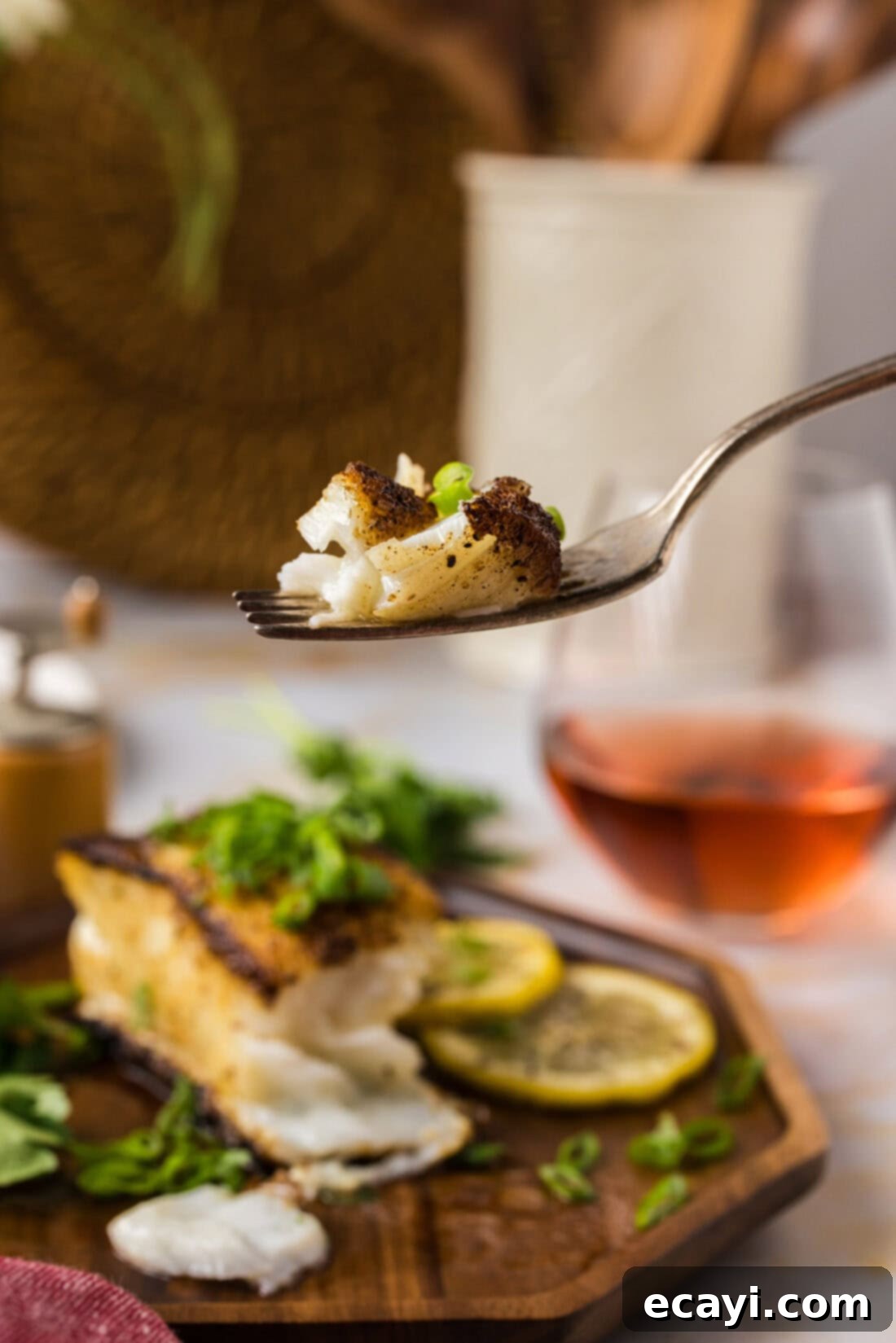
Elevate Your Meal: Delicious Serving Suggestions
Pan-seared Chilean sea bass is a versatile dish that pairs wonderfully with a variety of sides, creating a balanced and satisfying meal. For a classic and comforting combination, serve your flaky fish with creamy mashed potatoes, which perfectly complement the richness of the sea bass. To add freshness and essential nutrients, include steamed or roasted vegetables like crisp asparagus, tender broccoli, sweet carrots, or caramelized Brussels sprouts. These vegetables add vibrant color and texture to your plate.
For an extra burst of flavor and brightness, a simple squeeze of fresh lemon juice over the finished fish is highly recommended. The acidity of the lemon cuts through the butteriness of the fish, enhancing its delicate taste. You might also consider a light homemade salsa verde, a fresh herb salad, or a drizzle of a simple vinaigrette to complement the dish beautifully. Don’t forget a sprinkle of fresh parsley or chives for a pop of color and herbaceous aroma. Enjoy this elegant and easy-to-prepare meal!
More Delightful Seafood Recipes to Explore
If you’re a fan of delicious seafood, we have a variety of other recipes you might enjoy. Expand your culinary repertoire with these fresh and flavorful options:
- Smoked Trout – A unique and flavorful way to enjoy trout.
- Baked Orange Roughy – A light and healthy baked fish option.
- Fried Whiting Fish – For those who love a crispy, classic fried fish.
- Baked Chilean Sea Bass – An alternative preparation method for this wonderful fish.
- Steamed Chilean Sea Bass – A lighter, incredibly tender approach to cooking sea bass.
I love to bake and cook and share my kitchen experience with all of you! Remembering to come back each day can be tough, that’s why I offer a convenient newsletter every time a new recipe posts. Simply subscribe and start receiving your free daily recipes!
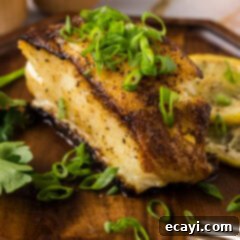
Pan Seared Chilean Sea Bass
IMPORTANT – There are often Frequently Asked Questions within the blog post that you may find helpful. Simply scroll back up to read them!
Print It
Pin It
Rate It
Save It
Saved!
Course: Dinner
Cuisine: American
Ingredients
- 1 pound Chilean sea bass
- 2 Tablespoons butter well softened
- garlic salt to taste
- black pepper to taste
- Old Bay seasoning to taste
- 2 Tablespoons olive oil
Things You’ll Need
-
Basting brush
-
Large heavy bottomed skillet
Before You Begin
- You can use salted or unsalted butter. If using salted butter, we recommend reducing or omitting the garlic salt to avoid over-salting.
- Be sure to gently squeeze out any excess liquid from the fish using paper towels, especially if the fish was previously frozen. This step is critical to prevent steaming and ensure a beautiful, crisp brown crust.
- Cook the Chilean sea bass to an internal temperature of 140°F (60°C) using an instant-read thermometer inserted into the thickest portion of the fillet for safety and perfect doneness.
- Optionally, enhance your dish with a luscious lemon-butter Beurre Blanc sauce, as demonstrated in our baked Chilean sea bass recipe, to give it that extra touch of gourmet elegance.
Instructions
-
Cut the Chilean sea bass into 3 equal fillets. Pat and gently squeeze them thoroughly dry with paper towels. Brush all sides of each fillet evenly with softened butter.
-
Season the fillets generously on all sides with garlic salt, black pepper, and Old Bay seasoning, adjusting quantities to your taste preference.
-
Heat the olive oil in a heavy-bottomed skillet over medium-high heat until it begins to shimmer, indicating it’s ready for searing.
-
Carefully place the seasoned fish fillets into the hot oil, skin side up. Cover the skillet with a lid and cook undisturbed for 7 minutes to allow an initial sear and gentle cooking.
-
Remove the lid and carefully turn the fish fillets over. Continue to cook, uncovered, for an additional 7-9 minutes, or until both sides are golden brown and the internal temperature reaches 140°F (60°C).
-
Once cooked, turn off the heat, but leave the lid on the skillet. Allow the fish to rest in the pan for 1-2 minutes. This resting period helps the fillets relax and reabsorb juices, ensuring a perfectly moist and tender finish.
Expert Tips & FAQs
- As with most fish, pan-seared Chilean sea bass is best served immediately for optimal flavor and texture. However, if you have leftovers, store them promptly in an airtight container in the refrigerator for 2-3 days.
- Reheating fish can be delicate, as it tends to overcook easily. To reheat, place the fish in a baking dish with a splash of water, cover with aluminum foil, and warm in a 275°F oven for about 10 minutes, or until just heated through.
- Ensure your skillet is truly hot before adding the fish. A cold pan will cause the fish to stick and prevent a proper sear. The oil should be shimmering, but not smoking excessively.
- Avoid overcrowding the pan. If cooking more than 3 fillets, sear them in batches to maintain high pan temperature and achieve a good crust on each piece.
Nutrition
Tried this Recipe? Pin it for Later!Follow on Pinterest @AmandasCookin or tag #AmandasCookin!
The recipes on this blog are tested with a conventional gas oven and gas stovetop. It’s important to note that some ovens, especially as they age, can cook and bake inconsistently. Using an inexpensive oven thermometer can assure you that your oven is truly heating to the proper temperature. If you use a toaster oven or countertop oven, please keep in mind that they may not distribute heat the same as a conventional full sized oven and you may need to adjust your cooking/baking times. In the case of recipes made with a pressure cooker, air fryer, slow cooker, or other appliance, a link to the appliances we use is listed within each respective recipe. For baking recipes where measurements are given by weight, please note that results may not be the same if cups are used instead, and we can’t guarantee success with that method.
